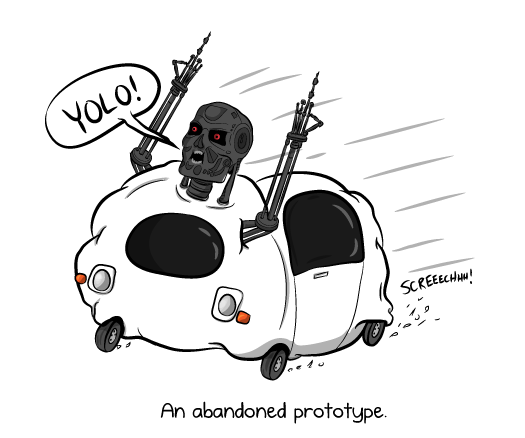If you live in a city, chances are that the politicians of your ‘burgh are talking light rail. Unless, of course, you already are suffering under the burden of a light rail project snarling traffic during construction … and snarling traffic in operation. Light rail, in general, is an attempt to resurrect the streetcar era by vast infusions of tax dollars. It’s an attempt to solve a traffic management problem in one of the more inefficient ways possible: to get a few people out of their cars and into modern streetcars instead.
I’m not anti-rail by any means. I travel five days a week on a heavy rail commuter train that does a pretty fair job of getting me where I need to go in a timely and economical fashion. Worse than that, I’m a railway fan — as I’ve mentioned before, I founded a railway historical society. I’m not against light rail due to some sort of anti-rail bias … I’m against it because it’s almost always too expensive, too inflexible, and too politicized.
Georgi Boorman wonders why so many cities are still falling into the light rail trap:
In a previous piece, I discussed the radical ideological roots of the mass transit scam. There are some, such as Seattle City Councilwoman Kshama Sawant (who urged Boeing factory workers to seize control of the plant and begin building mass transit) who believe centralization and a complete shift to mass transit are crucial for cities’ futures. Others simply buy into this myth that light rail and trolleys will somehow elevate their cities to the next level of sophistication — the very prospect of which is ignorant, at best, and self-indulgent, at worst.
The overwhelming evidence shows that these mass transit projects do little to improve our quality of life, in terms of easing congestion and expanding access to jobs and, despite popular perception, have no significant net environmental benefits since they rarely succeed in their express goal of removing cars from the road or decreasing congestion-induced idle times, a frequently cited contributor to greenhouse-gas emissions. As the satirical online newspaper The Onion reported, “98% of Americans favor public transportation for others.” That statistic may be fake, but we’ve all experienced the sentiment.
Even the writers of The Simpsons seem to understand the comical nature of light-rail adoption in American cities, brilliantly satirizing the salesmanship by transit authorities. The salesman, “Lyle Lanley,” begins by comparing the Simpsons’ town of Springfield to Shelbyville. “This is more of a Shelbyville idea,” he says slowly, turning his back to the crowd. “Now, wait a minute!” the Springfield mayor responds hastily, “We’re just as smart as the people of Shelbyville—just tell us your idea and we’ll vote for it!”
Gleefully, Lanley begins his presentation; with a grand sweeping gesture, the salesman uncovers a model of the city, complete with buildings, trees, and a brand new Springfield Monorail zooming through the town on its miniature tracks. Holding up a map labeled with all the towns to which he’s sold monorails, he exclaims, “By gum, it put them on the map!” Continuing his pitch, Langley heightens the townspeople’s imaginations and sells them on the “novel” idea of their very own monorail.
In other words, the buy-in had nothing to do with demand for a certain kind of transportation, and everything to do with wanting do the same as other cities that have, or are building, the same thing. Of course, 50 years ago the Seattle Center monorail (built by the German company Alweg) could easily have been said to have elevated the Emerald City at the 1962 World’s Fair, being the cutting-edge of rail technology at the time; but building monorails, light rails, and streetcars in 2014 is a regressive move that mirrors the past rather than engages with the present while leaving room for future innovation.




